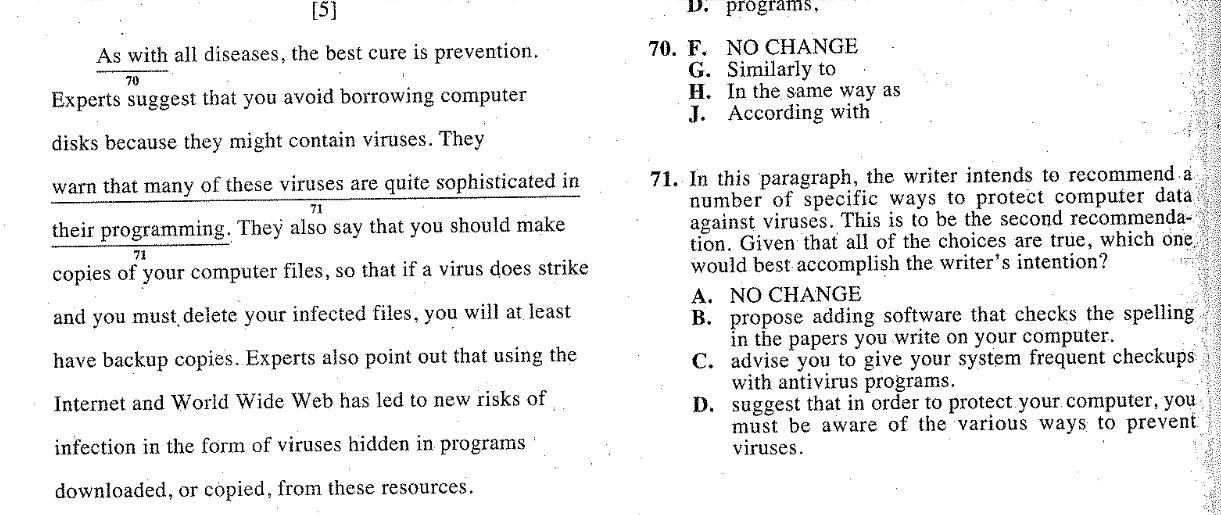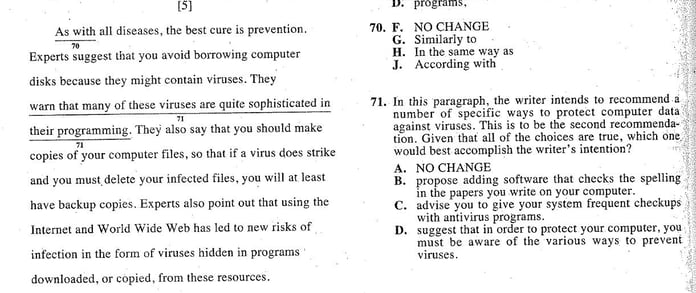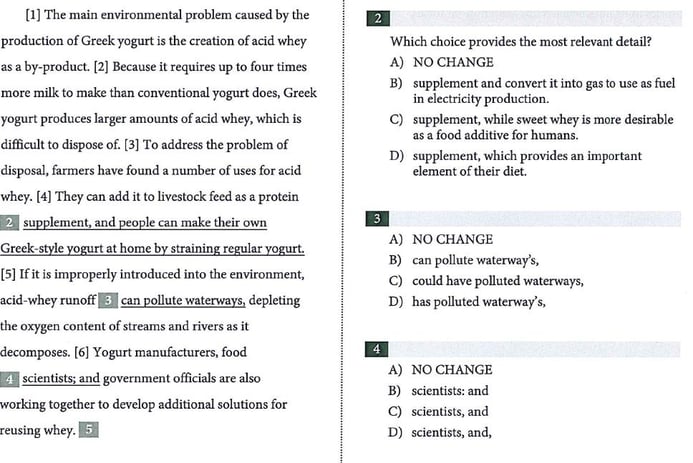Cross-training: The major advantage to the redesigned SAT

It is no secret that the Redesigned SAT bears an uncanny resemblance to the ACT. In their fight to maintain equal footing with the increasingly popular ACT, College Board has revamped the SAT in such a way that students have been given a distinct advantage in the way they can prepare for these exams. Yes, the SAT now has a non-calculator section, and yes, the SAT now aligns more closely with the Common Core, but the advantage to students does not come from a change in the level of difficulty or the similarities to the school curriculum. Rather, it comes from the ability to develop and build upon one specific set of skills that students can now use on both exams.
While there has always been a fair amount of crossover between the two exams as far as the content, a question within the English section of the ACT would require a different approach than a question from the Writing section of the SAT. Take for instance question 71, a question type commonly found on the ACT:

In order to answer this question correctly students must have read the two sentences prior to the underlined portion in question 71. In fact, the best evidence to get the answer to this question comes in the very first sentence of the paragraph. “As with all diseases, the best cure is prevention.” This statement lines up best with the idea presented in choice C that the best way to keep your computer running it should be constantly monitored for viruses.
Now let’s look at a typical question from the old SAT:

Notice how this question is comprised of a single sentence. On the old SAT students did not have to comprehend what they were reading, so much as memorize a series of grammar rules and recognize the indicators of certain errors. Essentially, these types of questions were designed to test students’ rote learning ability, not necessarily their command of the English language.
These differences between the two exams basically meant that students had to learn one set of strategies for the ACT and then another set of strategies for the SAT despite the fact that both exams were claiming to test the exact same thing. Luckily for students, questions in the New SAT Writing and Language section look like this:

Pay close attention to question 2 in the example above. Aside from the obvious “cut and paste” job that College Board has pulled in designing their exam, I want you to notice the manner in which the question is asked. This question provides a great example of a new type of question that students would not have seen on the old SAT. Any question that deals with “relevant details” could not have existed on that exam because the College Board was simply testing students’ grammar abilities based on one-off sentences that had no bearing on any other area of the test.
With this question however, students are required to have enough of an understanding of the main idea of the entire paragraph in order to answer correctly. Again, mimicking the exact skills needed to answer the ACT sample question from earlier.
These same similarities can be found throughout the Redesigned SAT. In the Reading section students can now commit to a single reading strategy instead of attempting to tweak or completely alter their strategies for each exam. Students can now spend their time getting really, really good at one way of doing things.
While the math has always been the math, and 2 +2 will always equal 4, the Redesigned SAT has also made a change here. Where the old SAT was largely comprised of algebra and geometry questions, asked fairly plainly, the Redesigned SAT has strayed from this and is now much more “text heavy.” Meaning that students can expect to find a large number of word problems throughout the exam. Something that is, again, eerily similar to what they might find on the ACT.
Why does this matter?
What this means for students is that the range of skills that they have to develop in order to see a significant score increase on their exams has gone down! In every hour that a student is preparing himself or herself for the SAT they are simultaneously enhancing the exact same abilities he or she is going to use when they sit for the ACT. No longer will a student have to flip-flop back and forth between strategies depending on what exam they are taking.
What this does not mean:
While this ultimately means that there will be a tremendous number of strategies that will carry over from exam to exam it is important to note that these two exams are still different! There is no magic bullet for acing these tests and students will only get out what they put in. Nothing will ever be a substitute for sheer exposure to questions. The more questions that a student sees, and the more often they come across the key strategies and concepts, the better they will do. As with everything in life, results are the product of hard work!


